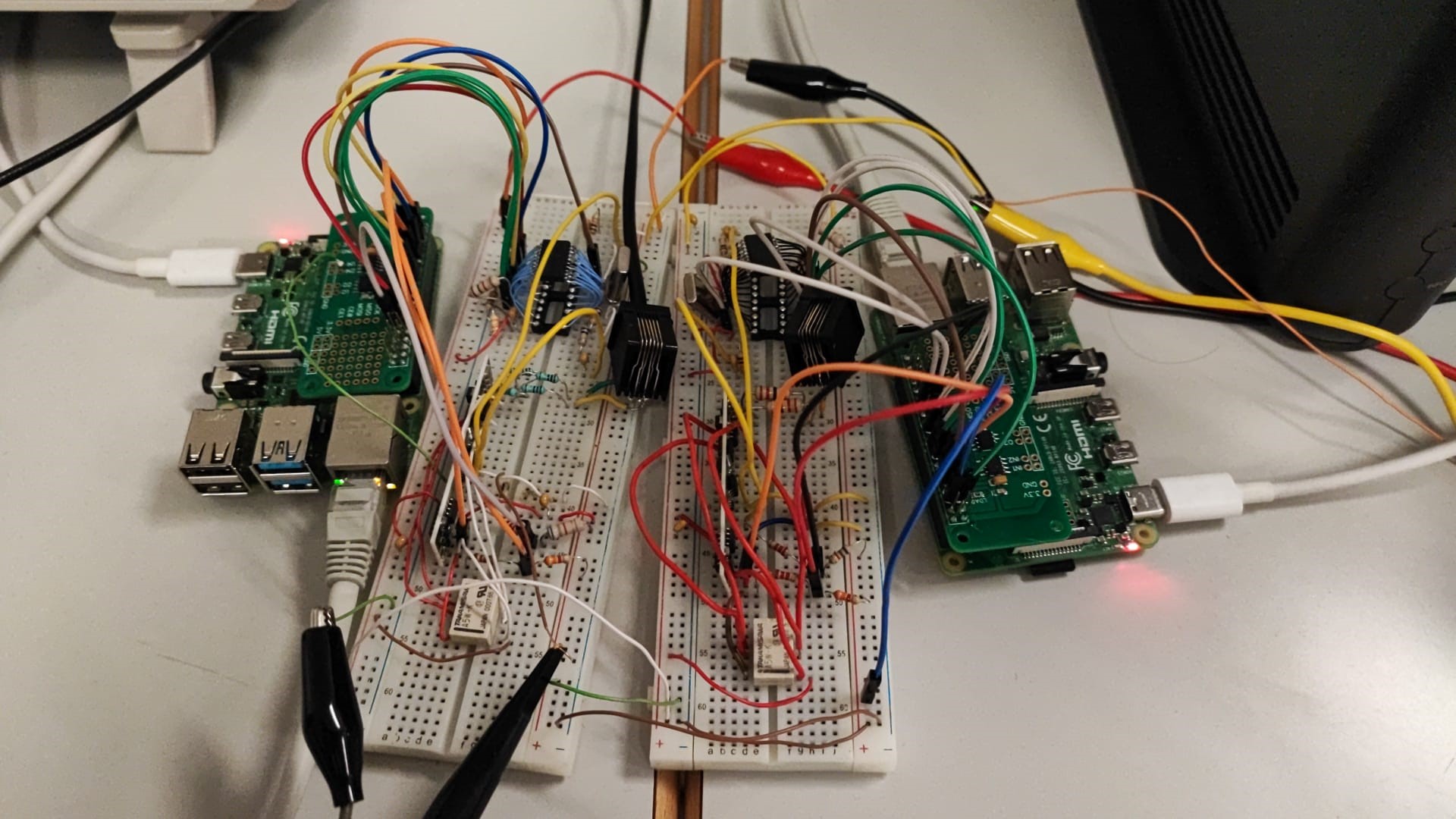Grupo 06 - Automoton- telephone erminal simulator
| Equipa: |
Grupo 06: Simão Monteiro (Coord.) , André Silveira , Miguel Ribeiro , Vitor Silva |
| Empresa: | Altice Labs |
| Orientadores: |
Arnaldo Oliveira (DETI)
Hélder Alves (Altice Labs) |
In the context of a university course titled "Industrial Project," a collaborative effort was initiated by a group consisting of five students, tasked with undertaking a project commissioned by companies such as Altice. The assignment assigned by Altice involved the development of a prototype designed to test and verify the FXS ports of fiber gateways integrated into home routers. The primary objective of the prototype was to facilitate the examination of the functionality of these ports through the initiation and reception of calls. In response to this directive, the group successfully devised a comprehensive prototype. This prototype, engineered with the purpose of streamlining the testing process for fiber gateways, not only facilitated the verification of FXS ports but also demonstrated the potential to enhance the production efficiency of fiber gateways by automating the testing procedures.
Challenge
The challenge Altice gave us was to produce a pair cost-effective prototype to connect to the analog ports of Altice labs development fiber gateways (FXS ports), in order to make/receive telephone calls between different devices under test, connected to a network, and to a validate the respective interfaces, either in factory, during their production tests, or in the validation test of the respective software, with implemention of decadic/DTMF dialing, sending/detection of tones in the audio band, call current detection. The devices should also have a LAN interface for controlling them, via an API to be implemented by the project team, which will allow the devices to be controlled on the shop floor and/or in the test laboratory.
Results
The project was done in 4 months, the result was a pair of prototypes ready to make and receive a call. Here is a brief video with the results.
Also the pair of prototypes looks like this:

Information about the project
This project contributed to a significant boost in Altice’s fiber gateway production rate. Currently, the testing of fiber gateways at the factories relies on manual procedures, which consume more time. The project team devised an automation system that surpasses the efficiency of the manual testing process, eliminating the need for human intervention. Consequently, the testing process has become autonomous, resulting in a substantial reduction in time consumption.
To initiate a call, the prototype must adhere to the following requirements:
In a standard telephone call, the phone is either in an “on-hook” or “off-hook” position, indicating whether the handset is resting on the cradle or lifted off. The “on-hook” state denotes inactivity, with the phone not making or receiving calls. Conversely, the “off-hook” state signifies activity, indicating that the phone is ready for use. To replicate this functionality in our prototype, as we didn’t have a physical telephone, we employed a relay to simulate the cradle.
In the absence of a telephone, our prototype emulates the traditional dial tone experience associated with landline telephones. The dial tone, a continuous and steady tone with a frequency of 350Hz-450Hz, is typically heard after lifting the handset and before entering a phone number. Our prototype employs an ADC to convert the AC signal from the fiber gateway to a DC signal, filters the information, and verifies whether the dial tone falls within the specified range (350Hz to 450Hz).
Following these steps, the phone is prepared to transmit DTMF tones (the sounds generated when pressing buttons) to initiate a call. The fiber gateway registers the dialed number and sends it through the fiber. For testing purposes, a LAN server simulates call routing, receiving the number, checking its existence, and forwarding the call to the corresponding number. In testing scenarios, this would typically be the other FXS port of the fiber gateway.
If the fiber gateway is functioning correctly and receives the number, the server interprets and forwards the call to the designated telephone, which would normally ring. In our prototype, we don’t have an audible ring, but we utilize a component called COIC (Central Office Interface Circuit) to detect the ringing voltage and ascertain that a call is being initiated. While a user would lift the handset on a telephone, our prototype uses the relay mentioned earlier to establish the call.
These procedures encompass the initiation and reception of a telephone call, a process effectively simulated by our pair of prototypes. Automation of these testing processes not only ensures accuracy but also accelerates the production of fiber gateways, contributing to increased efficiency. Here have a link to our git with the code of our project. Git hub

![[Vídeo do projeto]](/projects/Group06/ProjetoG6.jpg)